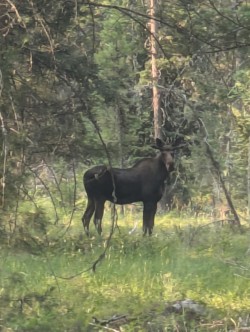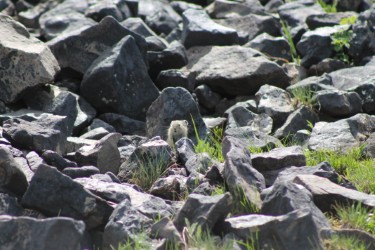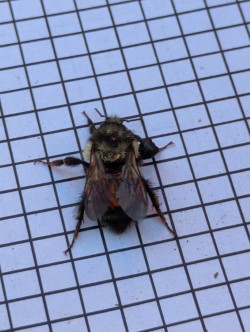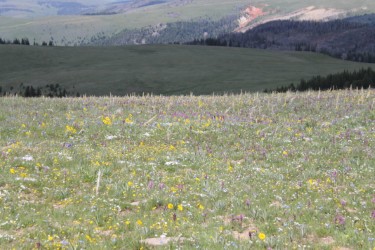July has flown by on the Beaverhead-Deer Lodge National Forest. Among the many projects planned for the field season I have been able to participate in rare plant monitoring, pollinator surveys, moth surveys, and scouting for seed collection sites to name a few.
This month has been filled with wildlife encounters of all shapes and sizes such as reptiles, amphibians, birds, deer, and much more. To kick off the month, we encountered some pikas up in the subalpine reaches of the Gravley Mountains after doing some White Bark Pine monitoring. During a pollinator survey up the Twin Lakes trailhead, I came pretty close to a large black bear meandering through the trees. The final wildlife highlight of the month was encountering a young bull moose while on our way to do rare plant monitoring in Maxville.


The Forest Service has partnered with a few different organizations in order to fill in the gaps of Montana pollinators including Montana State University, Bumble Bee Atlas, and the Montana Moth Project. Pollinator collections can get pretty competitive at times as people race to get the most bees. Both live and lethal collection techniques have been used.

The Beaverhead-Deer Lodge National Forest has several rare plant species including the federally endangered White Bark Pine. This has opened up many opportunities for the Botany Crew to do monitoring and assessments of rare plant species including White Bark Pine, Lemhi Penstemons, and Botrychium to name a few. During one of the White Bark Pine assessments, I was lucky enough to see the massive wildflower bloom that happens in the Gravley Mountain Range every year.

Seed collection is just right around the corner as many of the target seed collections for the Beaverhead-Deerlodge are starting to go to seed. Several scouting trips have been made in preparation for collections for Geranium viscosissimum, Festuca campestris, Glyceria, Lupinus argentus, Penstemon albertinus, and Gaillardia aristata to name a few. Collections should start very soon!
